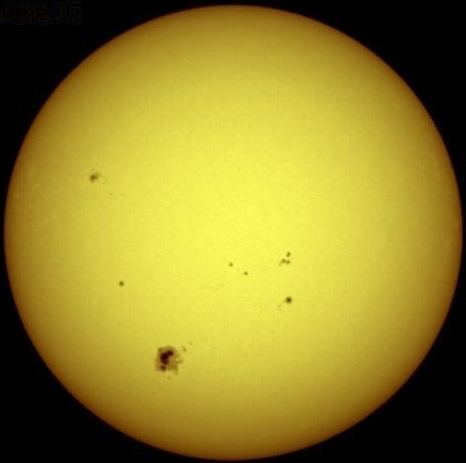Start date September 1986 Duration (years) 9.7 Max count month July 1989 | End date May 1996 Max count 158.5 Min count 8.0 | |
 | ||
Solar cycle 22 was the 22nd solar cycle since 1755, when extensive recording of solar sunspot activity began. The solar cycle lasted 9.7 years, beginning in September 1986 and ending in May 1996. The maximum smoothed sunspot number (monthly number of sunspots averaged over a twelve-month period) observed during the solar cycle was 158.5 (July 1989), and the minimum was 8. The maximum is identical with that of solar cycle 3, making it the equal third highest peak on record. There were a total of 309 days with no sunspots during this cycle.
Contents
March 1989 geomagnetic storm
During March 1989, a severe geomagnetic storm caused the collapse of Hydro-Québec's electricity transmission system. The geomagnetic storm causing this event was itself the result of a Coronal Mass Ejection on March 9, 1989. A few days before, on March 6, 1989, a very large X15 solar flare also occurred. At 2:44 am on March 13, 1989, a severe geomagnetic storm struck Earth. The storm began on Earth with extremely intense auroras at the poles. The aurora could be seen as far south as Texas. As this occurred during the Cold War, many worried that a nuclear first-strike might be in progress. Others considered the intense auroras to be associated with the Space Shuttle mission STS-29, which had been launched on March 13 at 9:57:00 AM. The burst caused short-wave radio interference, including the disruption of radio signals from Radio Free Europe into Russia. It was initially believed that the signals had been jammed by the Soviet government.
As midnight came and went, invisible electromagnetic forces were staging their own pitched battle in a vast arena bounded by the sky above and the rocky subterranean reaches of the Earth. A river of charged particles and electrons in the ionosphere flowed from west to east, inducing powerful electrical currents in the ground that surged into many natural nooks and crannies.
Some satellites in polar orbits lost control for several hours. GOES weather satellite communications were interrupted causing weather images to be lost. NASA's TDRS-1 communication satellite recorded over 250 anomalies caused by the increased particles flowing into its sensitive electronics. The Space Shuttle Discovery was having its own mysterious problems. A sensor on one of the tanks supplying hydrogen to a fuel cell was showing unusually high pressure readings on March 13. The problem went away just as mysteriously after the solar storm subsided.
The variations in the earth's magnetic field also tripped circuit breakers on Hydro-Québec's power grid. The utility's very long transmission lines and the fact that most of Quebec sits on a large rock shield prevented current flowing through the earth, finding a less resistant path along the 735 kV power lines.
The James Bay network went offline in less than 90 seconds, giving Quebec its second massive blackout in 11 months. The power failure lasted 9 hours and forced the company to implement various mitigation strategies, including raising the trip level, installing series compensation on ultra high voltage lines and upgrading various monitoring and operational procedures. Other utilities in North America, the UK, Northern Europe and elsewhere implemented programs to reduce the risks associated with geomagnetically induced currents.
Since 1995, geomagnetic storms and solar flares have been monitored from the Solar and Heliospheric Observatory (SOHO) joint-NASA-European Space Agency satellite.
August 1989 geomagnetic storm
In August 1989, another geomagnetic storm affected microchips, leading to a halt of all trading on Toronto's stock market. This geomagnetic storm was caused by a very large X20 solar flare on August 16, 1989, which was even stronger than the X15 flare from March 6, 1989, referred above.
